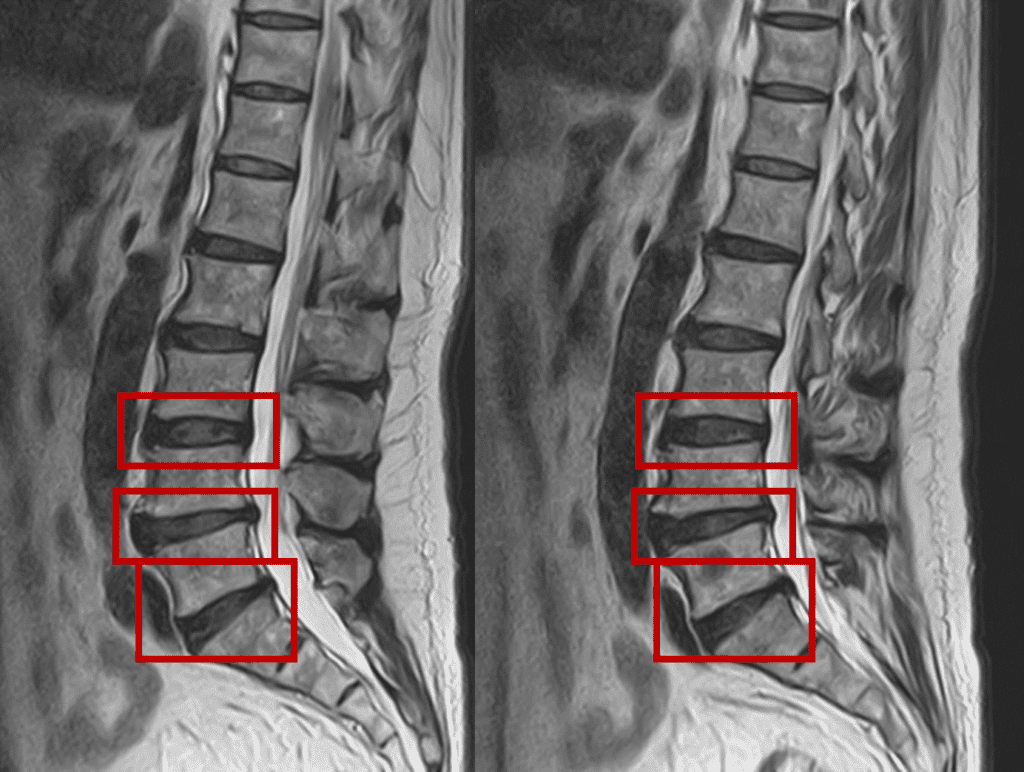Column Treatment Case Report No.50 | ILC International Low Back Pain Clinic (Osaka) Column
August 15, 2024
The patient
A male patient in his 60s
The patient’s medical history to date
The patient first developed a strained back in his 30s.
Three years ago, two months after lifting a heavy object, he suddenly lost the ability to move his legs, but after a month had passed, he somewhat began to feel better.
In June of this year, he developed lower back pain. He received treatment at a bone setting clinic, but after returning home the pain became severe.
The following night, he began to feel better again.
In 2003, post-surgery ossification of the posterior longitudinal ligament
Symptoms before treatment
Sitting in a crouched position or standing for long periods of time was somewhat difficult.
Standing up and turning over in bed are easy.
・Pain levels before treatment
| Lower back | Lower limbs | Numbness | Buttocks | |
|---|---|---|---|---|
| Pain level | 2 | 0 | 0 | 0 |
No pain at allis rated as 0, and the maximum possible pain is rated as 10.
Main areas of pain: Lower back

Forward bending: possible
Backward bending: possible
Pressure points: none
Lasegue test: negative
Coughing and sneezing: no discomfort
Additional information on our clinic’s medical examination
・Daily activities
The patient does not feel much pain when sitting, but it hurts when standing up quickly.
It is also very difficult to turn over in bed.
Image and findings

- L3/4 – Disc degeneration, protrusion
- L4/5, 5/s – Disc degeneration, protrusion, narrowed intervertebral foramen
The above was also observed on the imaging.
・Degeneration, protrusion and stenosis of the L4/5 and 5/s intervertebral discs were observed, and there is a high possibility that this is the cause of the main symptoms.
Degeneration and protrusion of the L3/4 intervertebral disc were also observed, and there is a possibility that this is also one of the causes of the symptoms.
Treatment
After consulting with the patient, the Serger method was performed on the L3/4, 4/5 and 5/s discs.
The treatment was performed by Dr. Kodera.

The treatment took about 50 minutes.
After resting in the recovery room, the patient was able to walk home by himself.
Our clinic’s treatment method
Additional information about the Cellgel method we have introduced in this column.
Cost of the Cellgel method: 1,320,000 yen per area (including tax) to 1,760,000 yen per 5 areas (including tax)
Risks and side effects of the Cellgel method: Transient pain may occur after treatment. Nerve damage is not a zero possibility due to the very nature of the treatment, but there have been no reports of damage so far in either report cases or publications. There is a very small possibility of allergic reactions to local anesthetics. Symptoms may temporarily worsen during the first week or two after treatment. This is believed to be due to the decompression effect of the implant, which retracts the surrounding tissues. In addition, if the disc is almost completely collapsed, treatment may be difficult. The doctor hold a consultation with you during your visit to the clinic to determine the best treatment option for your condition.
For more detailed information, please refer to the following links:
Blog page explaining the Cellgel method in an easy-to-understand manner
The Cellgel method on our treatment methods page
This article was written by the Administrative Director of our clinic



